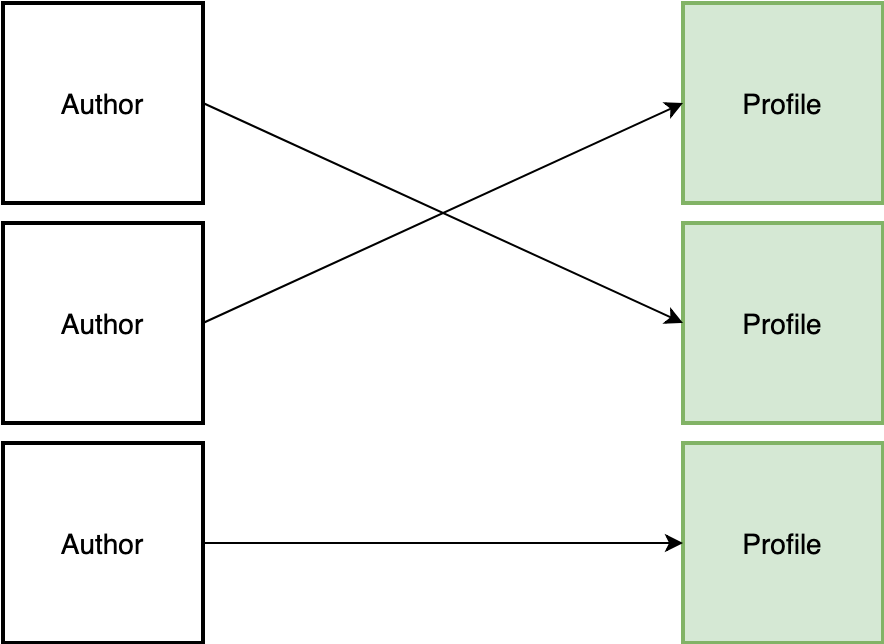An example one-to-one relation diagram:
With one-to-one relation, 1 record from first table (eg. authors) has exactly 1 matching record on the other table (eg. profiles).
One of the tables needs to have a column that will hold the id of the record on the other table.
In our example, we have authors and profiles. Since it makes no sense for a Profile to exist on it's own, the relation column (author_id) is put on the profiles table.
In short:
- has* - methods on Models that own the relation, no relation column
- belongs* - methods on Models that are other side of the relation, with relation column
In the example above each Author model has one Profile.
The relation on Profile model:
class Profile extends Model
{
public function author()
{
return $this->belongsTo('App\Author');
}
}
Relation on Author model:
class Author extends Model
{
public function profile()
{
return $this->hasOne('App\Profile');
}
}
Author model migration:
Schema::create('authors', function (Blueprint $table) {
$table->increments('id');
$table->timestamps();
});
Profile model migration:
Schema::create('profiles', function (Blueprint $table) {
$table->increments('id');
$table->timestamps();
$table->unsignedInteger('author_id')->unique();
$table->foreign('author_id')->references('id')->on('authors');
});
- Accessing the relation on already loaded model
use App\Author;
$author = Author::find(1); // Load author model
$profile = $author->profile; // Load the relation (separate query is made)
$profile = Profile::find(1);
$author = $profile->author;
The method name defining a relation is accessed as a field with the same name as the method name.
This is called Lazy Loading. Relations are only loaded from database when they are accessed for the 1st time.
- Loading the model with 1 relation at once
use App\Author;
$author = Author::with('profile')->whereKey(1)->first();
The Model::find() is a actually a shortcut view source
That behind the scenes does this:
return $this->whereKey($id)->first($columns);
- Loading the model with many relations at once
use App\Author;
$author = Author::with(['profile', 'account'])->whereKey(1)->get();
$author = new Author();
$author->save();
$profile = new Profile();
$author->profile()->save($profile);
Notes:
- You can't save
Profilemodel beforeauthor_idcolumn is assigned with the valididofAuthor - That means, you can't use
Profile::create()as it immediately saves the model, unless you pass theauthor_idlikeProfile::create(['author_id' => 1]); - The latter can only be used, when
author_idis on the$fillablelist of theProfilemodel
$profile = new Profile();
$author = Author::create();
$profile->author()->associate($author)->save();
Or
$profile = new Profile(); // Create model instance
$profile->author_id = 1; // Create relationship
$profile->save(); // Save model
Or
// Create new model with relationship and save
$profile = Profile::create(['author_id' => 1]);
In the end, creating the association is basically assigning the author_id column of the Profile model (profiles table record).

